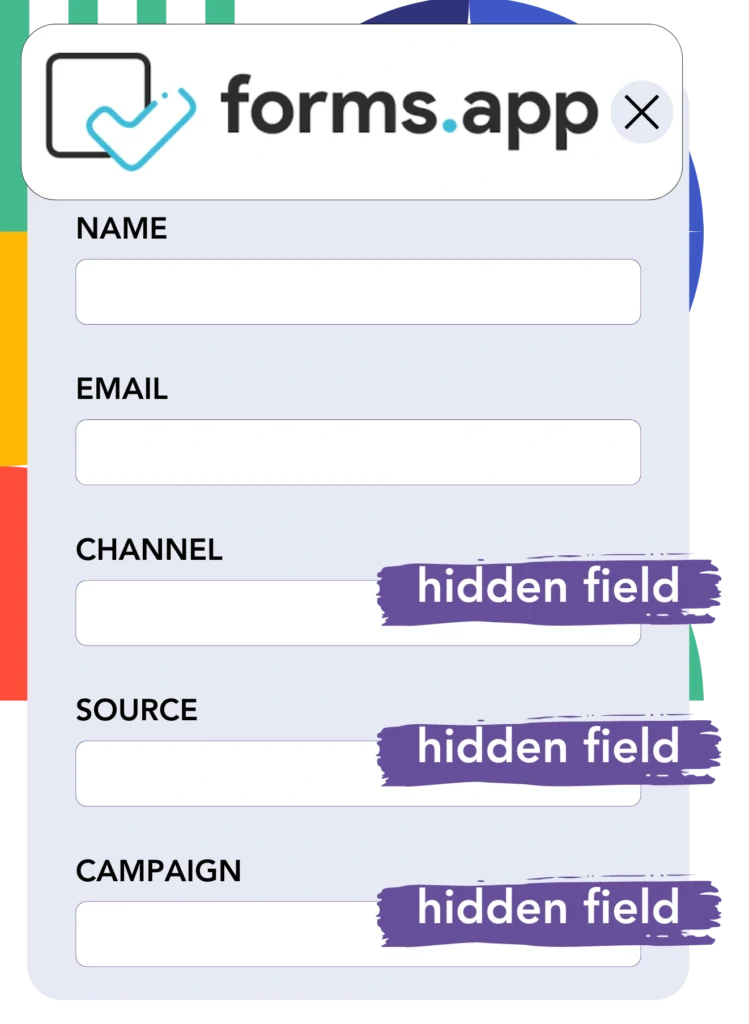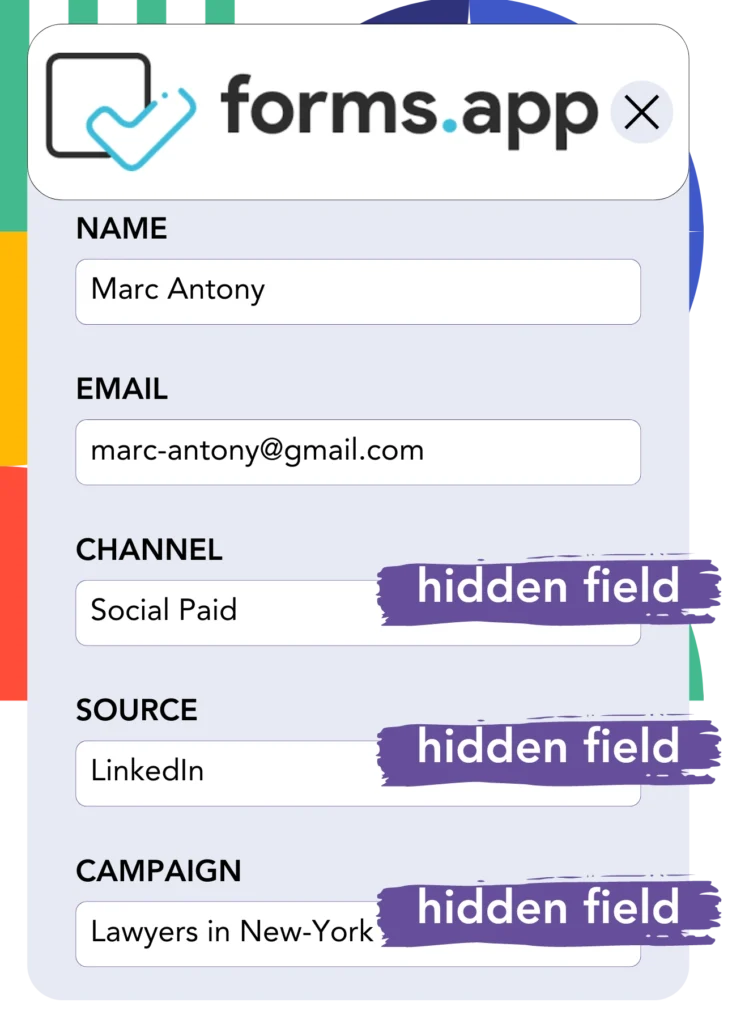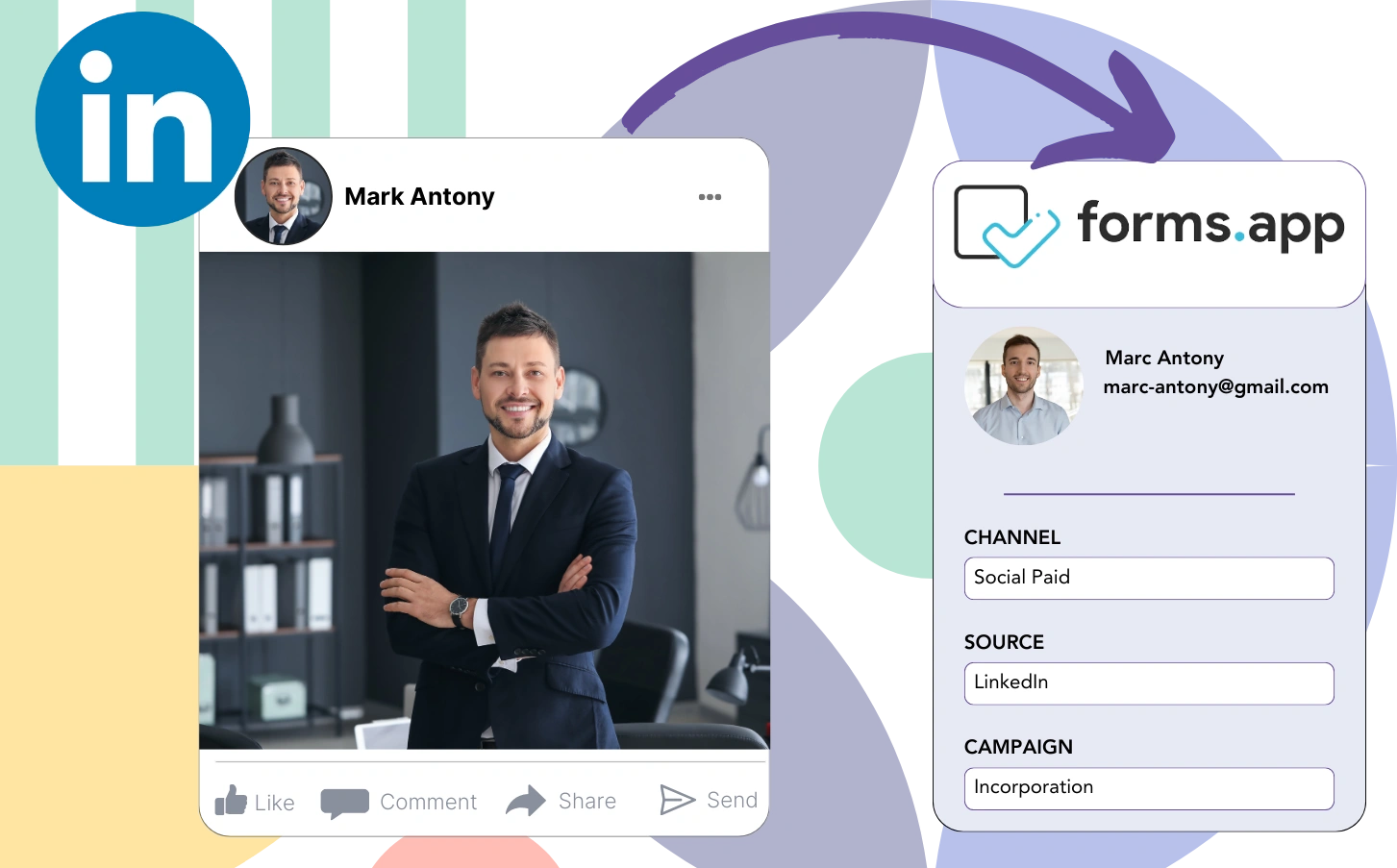You are running LinkedIn ads but unable to determine which ad is generating leads, sales, and revenue?
You probably know the overall lead count from each LinkedIn ad, but you can’t analyze it at the lead level.
This means you’re unsure which LinkedIn ad generated the customer-converting leads, leaving your budget optimization in question.
This issue is handled by Leadsources.
This challenge is handled by Leadsources, which captures your LinkedIn ads data (campaign, audience, ad, etc.) down to the lead level.
You can store LinkedIn ad data for each lead, including campaign, audience, and ad, in forms.app.
Reports like “Ads that generated the most leads” can be run to decide which ad to promote or discontinue.
Let’s take a closer look!
Capture LinkedIn ads in forms.app
Step 1: Add Leadsources in the head tag of your website

Sign up to Leadsources.io, and benefit from our 14-day free trial.
Add the tracking code from Leadsources to the head tag of your website.
No code is necessary, follow this easy step-by-step guide.
Step 2: Add the UTM parameters to your LinkedIn campaigns

Insert the UTM parameters you wish to monitor across all your LinkedIn ads (campaign, audience, ad, etc.).
As an example, consider adding these UTM parameters to the links in your LinkedIn ads:
- UTM_source
- UTM_campaign
- UTM_term
- UTM_content
Note that Leadsources also gathers lead source data, including channel, landing page, and landing page subfolder, even when UTM parameters are not in use, to create a thorough overview of your leads source at the lead level.
Step 3: Add the hidden fields in forms.app

When someone fills in your forms.app form, Leadsources populates the hidden fields with data from your LinkedIn ads (campaign, audience, ad, etc.).
Follow our detailed guide to include hidden fields in forms.app for completing the setup.
The LinkedIn ads data is then integrated directly into your forms.app form by Leadsources (see Step 4).
Step 4: Capture the LinkedIn ads data in forms.app

Leadsources collects LinkedIn ad data (campaign, ad set, audience, ad, etc.) as soon as a user clicks on your LinkedIn ad and lands on your site.
Leadsources places the LinkedIn ads data into the hidden fields of your forms.app form automatically.
Upon form submission, both the LinkedIn ads data and the form responses are forwarded to the forms.app submissions page for each lead created.
How does Leadsources work?
Including the Leadsources tracking code in the head tag of your site lets you capture LinkedIn ads data (campaign, audience, ad, etc.) whenever a visitor comes to your website.
The LinkedIn ads data is then recorded in the hidden fields of your forms.app form.
Leadsources will save the following visitor data:
- Channel
- Source
- Campaign
- Content
- Term
- Landing page
- Landing page subfolder
This allows you to stay updated on key lead source details even when UTM parameters can’t be applied, such as when your traffic is sourced organically, like:
- Google Search
- Instagram bio link
- Social media posts
- Etc.
Although most tools only capture lead data when UTM parameters are added, Leadsources still works without them, allowing reliable tracking of your lead source.
Therefore, unlike other tools, Leadsources collects lead data from every channel:
- Organic Search
- Paid Search
- Organic Social
- Paid Social
- Referral
- Affiliate
- Display Advertising
- Direct Traffic
This helps you track and merge all lead source data into a centralized spot.
Pro tip:
Track LinkedIn ads in your favorite online form builder, including Cognito Forms, Gravity Forms, Jotform, Typeform, or WPForms. Using another online form builder? Check our guide on how to track LinkedIn ads in your form.
How to run performance reports
Now that your LinkedIn ads data is housed in forms.app, you can create performance reports such as:
- Leads per campaign
- Leads per Ad set
- Leads per audience
- Leads per ad
- Etc.
This allows you to make enhanced decisions concerning your LinkedIn budget.
Let’s highlight the different types of reports you can generate.
1. Lead performance reports
Reports can be run to reveal the number of leads generated by:
- Channel
- Campaign
- Ad set
- Audience
- Ad
- Landing page
- Landing page subfolder
Example #1
You can transfer data from campaigns across various channels (SEO, Social Paid, Email, etc.) and create a report known as “Leads by Channel.”

Example #2
Once you establish the best-performing channel (e.g., LinkedIn ads), you can direct your attention to it to see how many leads came from each campaign.

Example #3
However, after you discover the campaign that generates the most leads, you can investigate which particular LinkedIn audience, campaign, or ad is driving these results.

2. Sales performance report
Discovering which LinkedIn ads and audiences resulted in the most leads is key. But does this suggest that these leads also affect your sales and revenue?
By bringing your forms.app data into a CRM (for example, GoHighLevel), you can determine which leads converted into customers, allowing you to create sales reports from your LinkedIn ads data (campaign, ad, audience, etc.).
See this example:
| Channels | Search Paid | Social Paid |
| Leads | 50 | 75 |
| Sales | 5 | 6 |
| Average order value | $150 | $100 |
| Revenue | $750 | $600 |
After looking into the advertising campaigns on Google and LinkedIn, the preliminary “Leads by Channel” report revealed that Social Paid ads on LinkedIn attracted more leads than Search Paid ads.
After evaluating your sales and revenue data from the CRM export, you found that the Search Paid channel yielded greater revenue with fewer leads than the Social Paid channel, suggesting a potential need to raise the Search Paid budget.
Moreover, you can generate a variety of reports that analyze sales and revenue performance in depth:
- Sales and revenue by source
- Sales and revenue by campaign
- Sales and revenue by content (aka. ad)
- Sales and revenue by term (aka. audience)
- Sales and revenue by landing page
- Sales and revenue by landing page subfolder
LeadSources tracks the source of each lead in forms.app, whether they come from ads, organic search, social, email, etc. and syncs that data with each submission. See the full breakdown on the lead source in forms.app page.

